Volume 1-8 (2009-16)
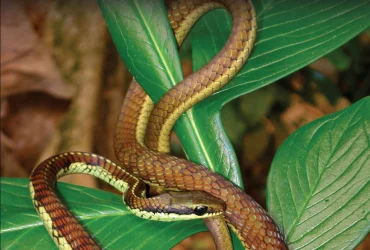 v3i2.48
v3i2.48ISSN: 1800-427X (print)
eISSN: 1800-427X (online)
DOI:10.47605/tapro.v3i2.48
Submitted date: 01 April 2011
Accepted date: 22 August 2011
Published date: 20 December 2011
Pp. 52–68.
STATUS OF THE MAMMAL FAUNA IN SUNDARBAN TIGER RESERVE, WEST BENGAL - INDIA
Jayanta Kumar Mallick*
*E-mail: jayantamallick2007@rediffmail.com
Abstract
Sundarban Tiger Reserve (2,584.89 km2) in West Bengal is a part of the world’s largest estuarine wetland and the only mangrove tigerland, spread over India and Bangladesh. Its plant associations exhibit a great generic/species diversity and offers habitats of many rare and endangered mammals. The dense thickets of Heritiera fomes, Nypa fruticans and Phoenix paludosa form the prime habitat of Panthera tigris tigris. This tigerland is also the abode of a good number of its prey and other associated mammal species. A one-year (January-December 2010) study was conducted with the frontline forest department staff to investigate the distribution and status of the mammalian species found in this thirty-eight years’ old tiger conservation area, involving literature review, questionnaire and ground surveys. This has revealed shrinkage of the mangrove swamp habitat and a number of mammal species in decline due to extensive anthropogenic and natural threats. Out of forty nine extant species recorded (eight orders: twenty three families), four are globally endangered, four vulnerable and two near threatened as per IUCN Red List. Alarmingly, fifteen mammal species were found on only rare occasions. In addition, six species (two orders: three families) had become extinct during the last two centuries. Though distributed over all forest block areas, the frequency of tigersighting was recorded more from Sajnekhali Wildlife Sanctuary and the buffer areas than Sundarban National Park or the core area. High-priority wildlife conservation, proper implementation of the tiger action plan, further infrastructural development and effective joint forest management are essential for saving this tigerland.
Key words : Tigerland, world heritage, wetland, distribution, threats, conservation
Section Editor: Lee Harding
eISSN: 1800-427X (online)
DOI:10.47605/tapro.v3i2.48
Submitted date: 01 April 2011
Accepted date: 22 August 2011
Published date: 20 December 2011
Pp. 52–68.
STATUS OF THE MAMMAL FAUNA IN SUNDARBAN TIGER RESERVE, WEST BENGAL - INDIA
Jayanta Kumar Mallick*
*E-mail: jayantamallick2007@rediffmail.com
Abstract
Sundarban Tiger Reserve (2,584.89 km2) in West Bengal is a part of the world’s largest estuarine wetland and the only mangrove tigerland, spread over India and Bangladesh. Its plant associations exhibit a great generic/species diversity and offers habitats of many rare and endangered mammals. The dense thickets of Heritiera fomes, Nypa fruticans and Phoenix paludosa form the prime habitat of Panthera tigris tigris. This tigerland is also the abode of a good number of its prey and other associated mammal species. A one-year (January-December 2010) study was conducted with the frontline forest department staff to investigate the distribution and status of the mammalian species found in this thirty-eight years’ old tiger conservation area, involving literature review, questionnaire and ground surveys. This has revealed shrinkage of the mangrove swamp habitat and a number of mammal species in decline due to extensive anthropogenic and natural threats. Out of forty nine extant species recorded (eight orders: twenty three families), four are globally endangered, four vulnerable and two near threatened as per IUCN Red List. Alarmingly, fifteen mammal species were found on only rare occasions. In addition, six species (two orders: three families) had become extinct during the last two centuries. Though distributed over all forest block areas, the frequency of tigersighting was recorded more from Sajnekhali Wildlife Sanctuary and the buffer areas than Sundarban National Park or the core area. High-priority wildlife conservation, proper implementation of the tiger action plan, further infrastructural development and effective joint forest management are essential for saving this tigerland.
Key words : Tigerland, world heritage, wetland, distribution, threats, conservation
Section Editor: Lee Harding
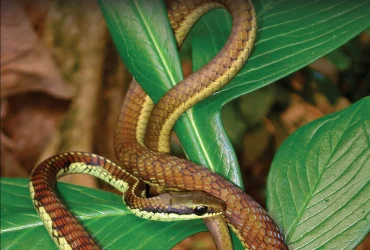 v3i2.47
v3i2.47ISSN: 1800-427X (print)
eISSN: 1800-427X (online)
DOI:10.47605/tapro.v3i2.47
Published date: 20 December 2011
Pp. 50–51
EDITORIAL : Natural History Today and Tomorrow
Bruce M. Beehler
Section Editor: Taprobanica, the journal of Asian Biodiversity
Although it is often said that the 19th Century was the epoch Natural History, the most substantial efforts in the study of nature and natural history will almost certainly be recorded during the 21st Century, which Alain Dubois (2010) has dubbed “the century of extinctions”. We will thus be learning more about nature at the same time that we may be witnessing its wholesale demise. Still, today it is not too late to change course, through a greater appreciation of Natural History. In most societies science and technology are today predominant. This editorial argues that natural history is an equally important field of knowledge—one that knits together the work of biogeography, taxonomy, ecology, ethology, and evolution. Knowledge and appreciation of natural history underpins all actions that sustain the wealth of nature, which, in turn, underpins the future of our every-day existence.
eISSN: 1800-427X (online)
DOI:10.47605/tapro.v3i2.47
Published date: 20 December 2011
Pp. 50–51
EDITORIAL : Natural History Today and Tomorrow
Bruce M. Beehler
Section Editor: Taprobanica, the journal of Asian Biodiversity
Although it is often said that the 19th Century was the epoch Natural History, the most substantial efforts in the study of nature and natural history will almost certainly be recorded during the 21st Century, which Alain Dubois (2010) has dubbed “the century of extinctions”. We will thus be learning more about nature at the same time that we may be witnessing its wholesale demise. Still, today it is not too late to change course, through a greater appreciation of Natural History. In most societies science and technology are today predominant. This editorial argues that natural history is an equally important field of knowledge—one that knits together the work of biogeography, taxonomy, ecology, ethology, and evolution. Knowledge and appreciation of natural history underpins all actions that sustain the wealth of nature, which, in turn, underpins the future of our every-day existence.
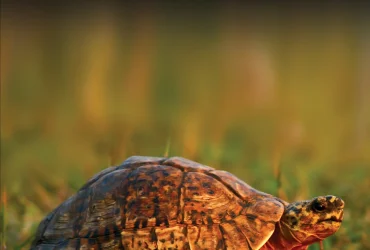 v3i1.46
v3i1.46ISSN: 1800-427X (print)
eISSN: 1800-427X (online)
DOI:10.47605/tapro.v3i1.46
Submitted date: 24 May 2011
Published date: 30 July 2011
Pp. 49.
Letter to Editor : RESPONSE TO WARAKAGODA AND
SIRIVARDANA, 2009
S.W. Kotagama*, Rex I. De Silva, A.S. Wijayasinha & V. Abeygunawardana
*Corresponding author. E-mail: fogsl@slt.lk
We respond to the article by Deepal Warakagoda and Udaya Sirivardana entitled “The Avifauna of Sri Lanka: An Overview of the Current Status” (2009). In an appendix to this article the writers make several critical comments on the “Avifaunal List of Sri Lanka”, authored by us. Warakagoda and Sirivardana contend that many species are included in our publication “Which had not been accepted by the CBCRRC [Ceylon Bird Club Records and Rarities Committee], and reports whose contents fall short of the level of authenticity required by a standard rarities committee”. It goes on to say that “A clearly inadequate criterion is used for accepting sight records of rare migrants”.
eISSN: 1800-427X (online)
DOI:10.47605/tapro.v3i1.46
Submitted date: 24 May 2011
Published date: 30 July 2011
Pp. 49.
Letter to Editor : RESPONSE TO WARAKAGODA AND
SIRIVARDANA, 2009
S.W. Kotagama*, Rex I. De Silva, A.S. Wijayasinha & V. Abeygunawardana
*Corresponding author. E-mail: fogsl@slt.lk
We respond to the article by Deepal Warakagoda and Udaya Sirivardana entitled “The Avifauna of Sri Lanka: An Overview of the Current Status” (2009). In an appendix to this article the writers make several critical comments on the “Avifaunal List of Sri Lanka”, authored by us. Warakagoda and Sirivardana contend that many species are included in our publication “Which had not been accepted by the CBCRRC [Ceylon Bird Club Records and Rarities Committee], and reports whose contents fall short of the level of authenticity required by a standard rarities committee”. It goes on to say that “A clearly inadequate criterion is used for accepting sight records of rare migrants”.
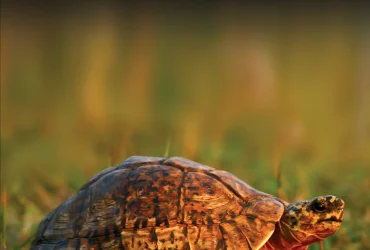 v3i1.45
v3i1.45ISSN: 1800-427X (print)
eISSN: 1800-427X (online)
DOI:10.47605/tapro.v3i1.45
Submitted date: 20 July 2011
Accepted date: 27 July 2011
Published date: 30 July 2011
Pp. 47–48.
Red morph of silvered lutung (Trachypithecus cristatus) rediscovered in Borneo, Malaysia
Lee E. Harding*
*E-mail: harding@sciwrite.ca
The red morph of Silvered Lutung (Trachypithecus cristatus) a leaf monkey that reportedly occurs or occurred in northeast Borneo, has heretofore been more mythological than real. As far as I can discover, the red morph was only actually observed and reported once, by Allen & Coolidge Jr. (1940). They recorded that seven out of fifteen adult males, but only three out of twenty-six adult females collected at Abai, were reddish. Abai is 47 miles/76 km from the mouth of the Kinabatangan River. This observation was repeated by others. Payne et al. (1985), who lived in Sabah, wrote that the red form occurs at the mouth of the Kinabatangan River.
Section Editor: Colin Groves
eISSN: 1800-427X (online)
DOI:10.47605/tapro.v3i1.45
Submitted date: 20 July 2011
Accepted date: 27 July 2011
Published date: 30 July 2011
Pp. 47–48.
Red morph of silvered lutung (Trachypithecus cristatus) rediscovered in Borneo, Malaysia
Lee E. Harding*
*E-mail: harding@sciwrite.ca
The red morph of Silvered Lutung (Trachypithecus cristatus) a leaf monkey that reportedly occurs or occurred in northeast Borneo, has heretofore been more mythological than real. As far as I can discover, the red morph was only actually observed and reported once, by Allen & Coolidge Jr. (1940). They recorded that seven out of fifteen adult males, but only three out of twenty-six adult females collected at Abai, were reddish. Abai is 47 miles/76 km from the mouth of the Kinabatangan River. This observation was repeated by others. Payne et al. (1985), who lived in Sabah, wrote that the red form occurs at the mouth of the Kinabatangan River.
Section Editor: Colin Groves
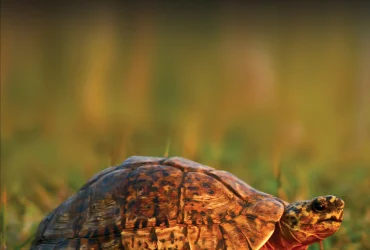 v3i1.44
v3i1.44ISSN: 1800-427X (print)
eISSN: 1800-427X (online)
DOI:10.47605/tapro.v3i1.44
Submitted date: 29 December 2010
Accepted date: 29 June 2011
Published date: 30 July 2011
Pp. 44–46.
Two rare butterfly species observed from two isolated forest patches in Kalutara District, Sri Lanka
D.M.S.S. Karunarathna*, R.G.A.T.S. Wickramarachchi, D.H.P.U. Silva & U.T.I. Abeywardena
*Corresponding author. E-mail: dmsameera@gmail.com
Butterflies are a group of charismatic insects, which forms a major component of Sri Lankan biodiversity. The total butterfly species recorded in Sri Lanka consists of 244 species and among them 20 (8.1%) are endemic to the island. Overall, 22 butterfly species are critically endangered, 29 endangered and 15 vulnerable and insufficient data are available for rating the status of 29 species. The distribution and ecology of butterflies, as well as of other insects, has been underestimated or neglected over the last few decades in Sri Lanka. Here we extend the distribution of two endangered butterflies in Sri Lanka.
Section Editor: Jeffrey Miller
eISSN: 1800-427X (online)
DOI:10.47605/tapro.v3i1.44
Submitted date: 29 December 2010
Accepted date: 29 June 2011
Published date: 30 July 2011
Pp. 44–46.
Two rare butterfly species observed from two isolated forest patches in Kalutara District, Sri Lanka
D.M.S.S. Karunarathna*, R.G.A.T.S. Wickramarachchi, D.H.P.U. Silva & U.T.I. Abeywardena
*Corresponding author. E-mail: dmsameera@gmail.com
Butterflies are a group of charismatic insects, which forms a major component of Sri Lankan biodiversity. The total butterfly species recorded in Sri Lanka consists of 244 species and among them 20 (8.1%) are endemic to the island. Overall, 22 butterfly species are critically endangered, 29 endangered and 15 vulnerable and insufficient data are available for rating the status of 29 species. The distribution and ecology of butterflies, as well as of other insects, has been underestimated or neglected over the last few decades in Sri Lanka. Here we extend the distribution of two endangered butterflies in Sri Lanka.
Section Editor: Jeffrey Miller
Hubungi Kami
The ultimate aim of the journal is to provide an effective medium for communication of the latest and best scientific information.
Copyright © 2020 Taprobanica. All Rights Reserved
Jasa Pembuatan Website by IKT




